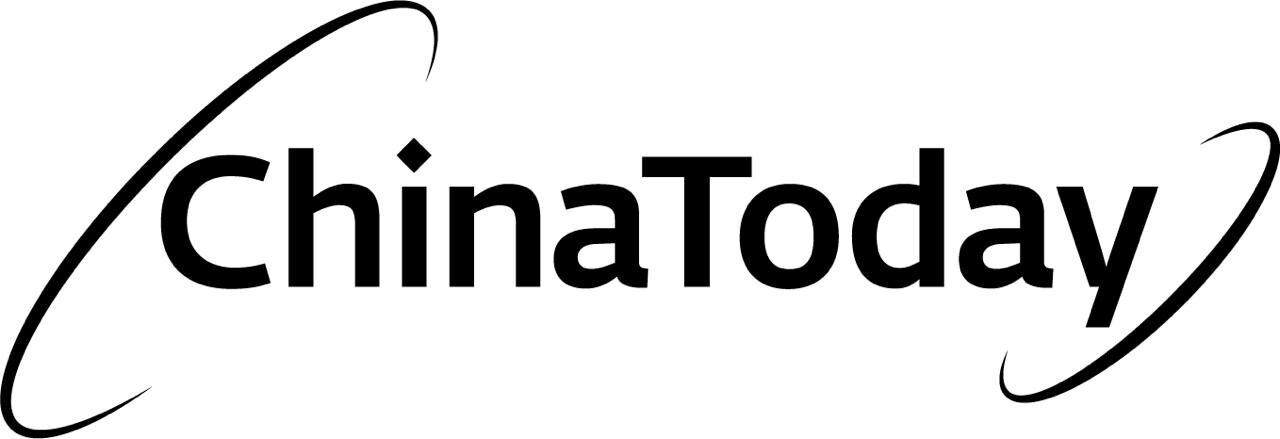How to Launch a Product in China Under Your Own Brand
A big guide for businesses planning to create a unique product in China as an own trademark
Here’s a sneak peek at how you can launch a product under your own brand in China, based on a real client success story. In this article, you’ll discover:
- A step-by-step process for getting your product manufactured in China
- A timeline you can expect
- Key considerations to ensure you achieve the results you want
About our client and his request
Our client has been selling fitness products on Amazon for over five years and has been sourcing products from China for more than three years. In 2021, to boost sales and profits, he decided to launch a new product that wasn’t yet available on the market. He turned to our company for help with manufacturing in China. This was an exciting project and a successful case of creating a unique product in China.
Step 1. Analysis and Technical Brief Preparation
It all starts with an idea. By the way, it is not always necessary to invent something new. You might choose to focus on a headliner, the most popular product in your or competitors’ portfolio., study reviews, conduct a survey among the target audience and think what you can improve.
Next step – prepare the most detailed description of your product. What to include:
- General qualities: sizing, color, materials
- Take photos or videos of the product, put in links for reference (if available)
- Set desired price per item
- Come up with criteria to evaluate product quality
- Set MOQ (minimal order quantity)
- Define delivery set: usage guide, charging devices, spare parts, etc.
- Describe packaging type: e.g., zip-lock bags, boxes, etc.
- Show where the logo is to be put: on the packaging, on the product, as a peep label, as a tag, etc.
- Indicate production lead times.
Normally, for small branded products MOQ is above 1000 pieces, for electronic appliances MOQ starts from 50 units and for other types of goods MOQs in average are 200—300 pieces.
It takes roughly 60 days to get branded products into the USA from the date of the first production until delivery. If the business model assumes ODM (original design manufacturing of the product from scratch), it might take 3+ months. Take into consideration these minimal lead times.
All this information is to be provided to a Sourcing Agent, who will carefully study the data, ask some additional questions and help to prepare a good Technical Brief. If there are some points in the request, which are not possible to be met, the Sourcing Agent will bring them up to your attention right away.
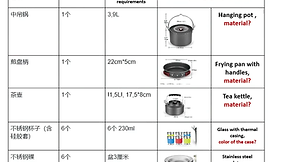
Step 2. Factory Search
Once you are clear on all the details, it is time to search for a factory. Here are some guidelines:
- Do not limit yourself to just one platform, search everywhere: via 1688, Alibaba, Taobao, at the exhibitions and in open catalogs.
- It is better to search for a factory via 1688 or a Chinese search machine, Baidu. Alibaba and Taobao are frequented more by resellers and big wholesale companies.
- Do a thorough check of the sellers: how long they have been on the market, what are their sales volumes, ratings. Pay attention to whether the name of the company is the same as it is stated in the documents (certificates, invoices).
E.g., it is possible to check a supplier with the help of a special service.
For example. one of our clients asked us to find a factory to make samples of 100 dumbbell sets under his own brand. We looked for a manufacturer, who could produce a test mold to make a sample. We selected 3 top manufacturers in terms of price/quality and MOQ and entered all data systematically into a spreadsheet, next agreed the proposal with the client.
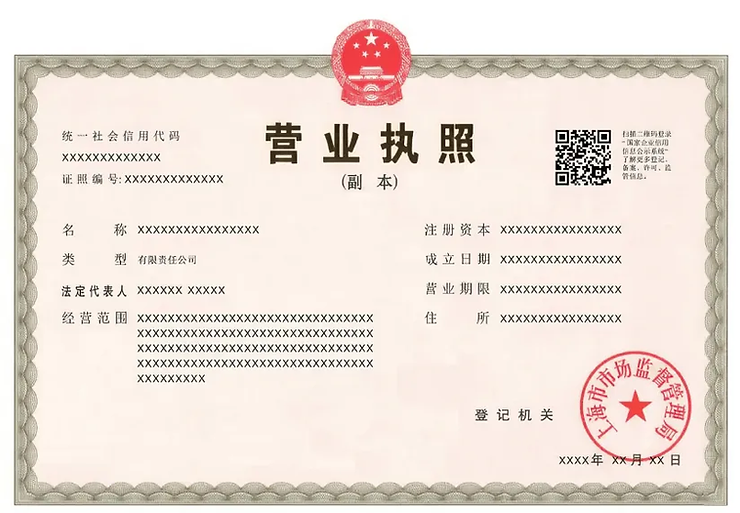
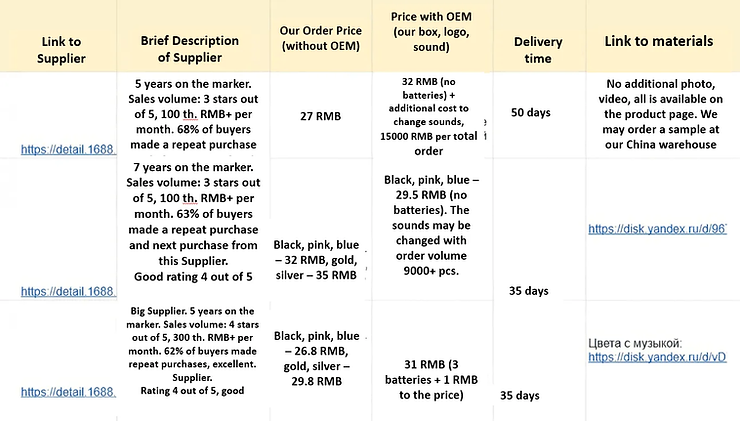
Step 3. Order Confirmation
Once the factory is chosen, double check all critical points, agree pricing, deadlines, product characteristics, sizing, colors, materials and other things. Specify every minor detail, even though you might think it is not so important.
Here is one example. Once a factory sent us a big order of balloons. And they smelled awfully. We got the following response from the manufacturer to our claim: ‘The technical brief did not specify that there should be no strong smell”
Step 4. Packaging Creation
If packaging is to be branded, request an original artwork file from the supplier. It would be easier together with your designer to adapt the artwork. If instruction in English is needed, the Sourcing Agent will translate it into English.
If you work directly with a Chinese factory, the guide and packaging in most cases will be in Chinese. Less often you might find a leaflet and a guide in English, but it means that this is a reseller most probably and the price for the goods will be higher.
The cheapest way to brand the packaging is to use screen printing. The price is 0,2—1 RMB per item. If the order size is 2,5—3 th. pieces, many manufacturers will do it for free.
Step 5. Payment and Sample Production
In order to make sure that the factory is capable of producing your order the way you need it, ask for a “golden sample’ . The sample price is always several times higher vs. mass production items. However, if you place a big volume order, the manufacturer will take it into account in the total sum.
Ordering samples is an important point, which should not be missed, especially if you work with a certain producer for the first time. Chinese manufacturers normally use 30/70 terms: 30% is a prepayment, 70% are paid prior to shipment. However, some factories, especially big ones, ask for 100% advance payment, which is also a regular practice.
Please control the situation during the process of the sample production. The manufacturer has to understand that you are interested in order placement and care about results to be delivered on time. The first deadline is 10 days before the set shipment date. Check with the supplier whether everything goes well and he is able to meet the deadline.
Our clients have an opportunity to keep everything under their control. They are able to track the order status via their personal account. This way they see where the goods are, whether the payment is made, when the shipment will be done.
Step 6. Sample Check
The supplier will send photos and videos of the samples prior to shipment. You have to approve the samples and if everything is ok, the factory will send the sample to our warehouse in Yiwu (this is a city in China). The samples will be checked there based on the individual technical brief.
In our example with one of the samples there was some delay, but it was for good. It turned out that the manufacturer mixed up the paint for the weight plates: we asked for the matt black, whereas the producer used semi matt. However, our client liked this option even better and we approved it as a final one.
Step 7. Mass Production and Random Check
If you are ok with the samples, get in touch with the manufacturer once again and negotiate prices and production timing. It is critical to fix all agreements at this stage. Not all Chinese suppliers are willing to sign a contract. However, there is a feasible solution, which is to sign a specification. Set the requirement that mass production goods are to be fully in line with the produced samples in terms of their qualities. This will keep you out of trouble , if suppliers are not so fair.
As soon as the order is ready, the seller will ship the products to the agent’s warehouse in China. It is necessary to check the products once again according to the individual technical brief. Please bear in mind that the warehouse operators do not know specifics of your products and what qualities are essential. Provide the most detailed description of what is to be checked to ensure you will get the proper quality goods later on.
Our team, for example, tried hats, put bandanas into water to check colorant stability, and used hairspray. In other words, they did everything to test product quality.
Always do check the quality of the products in China, even if you have already worked with the same supplier in the past. It is much easier to return defective goods before they cross the border.

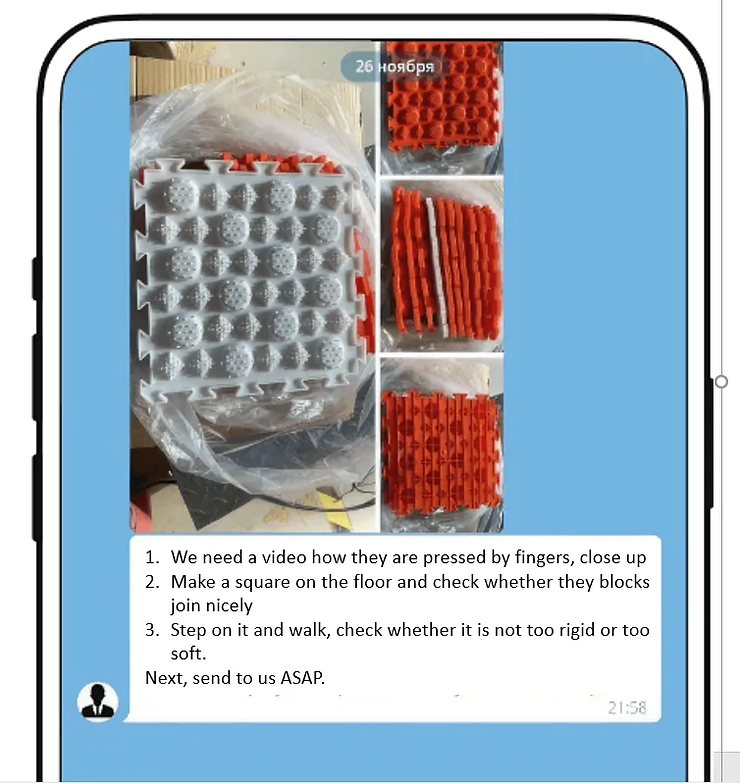
Step 8. Packaging and Shipment
Many manufacturers ship goods in flimsy boxes, as they used to deliver in China, but not to countries many miles overseas. Therefore, in most cases the goods are to be re-packed before the shipment, otherwise they might be damaged, and consumer packaging might get crumpled. We, as an example, use 3-layer carton boxes and stiffening angles and put adhesive tape on top.
Some goods are to be put into special rigid packaging: crates, palettes or laths. The cost of delivery will increase accordingly; however, such packaging will provide maximum protection for your products in transit.
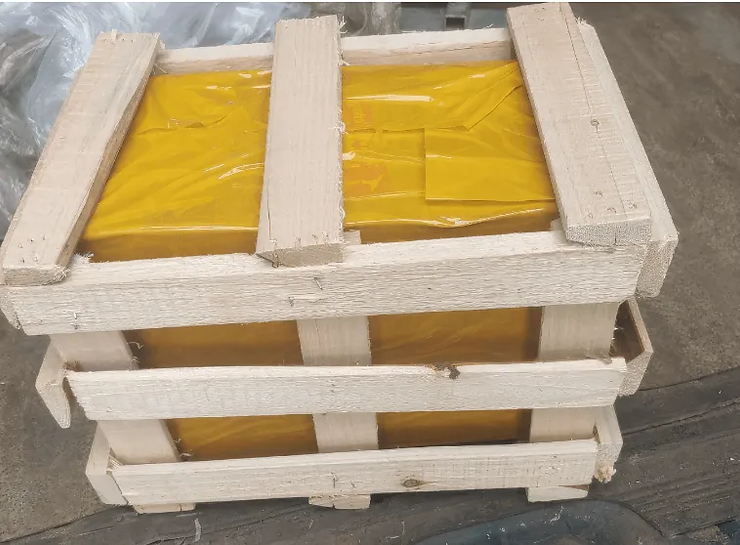
Step 9. Shipping the Product from China
Depending on the specifics of your product and your location, you can choose different shipping methods—by sea, air, with various options in terms of speed and cost.
In the case of our client, the goods were shipped by sea to the fulfillment center in the U.S., taking 35 days to arrive.
In Summary
Private label manufacturing is an excellent way to stand out from the competition and create a unique product that has no equivalents on marketplaces. The process can seem daunting at first, and there’s some truth to that—there are many details to consider to ensure everything goes smoothly. That’s why it’s much more advantageous to entrust this task to specialists. By partnering with Chinatoday, you gain access to an entire team of experts with 10 years of experience in sourcing products from China, all for just $1990 per month.
contact us
To get Seamless Logistics Services
1401 21ST STE R SACRAMENTO, CA 95811
1 916 588 91 58
info@chinatodaysourcing.com
